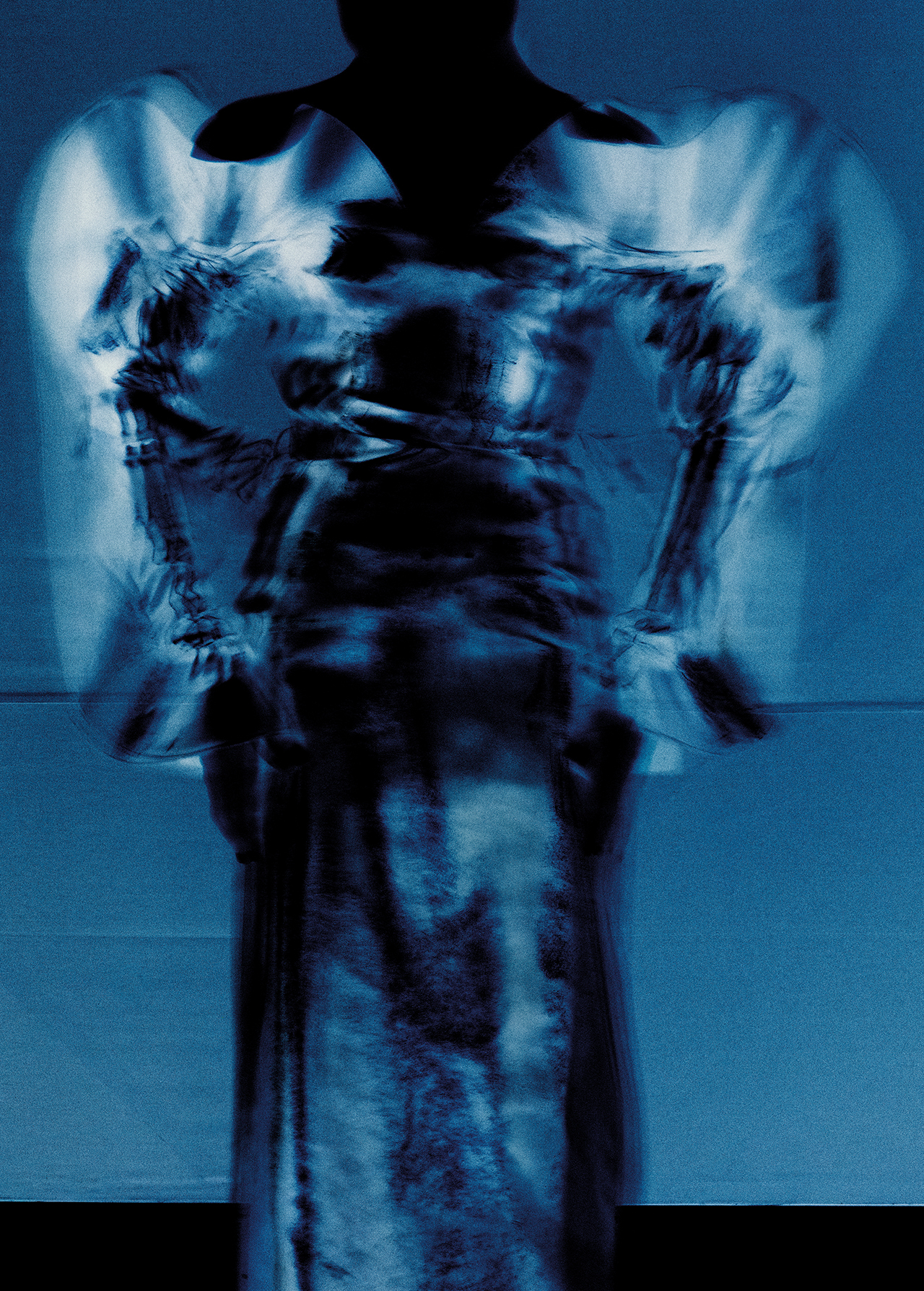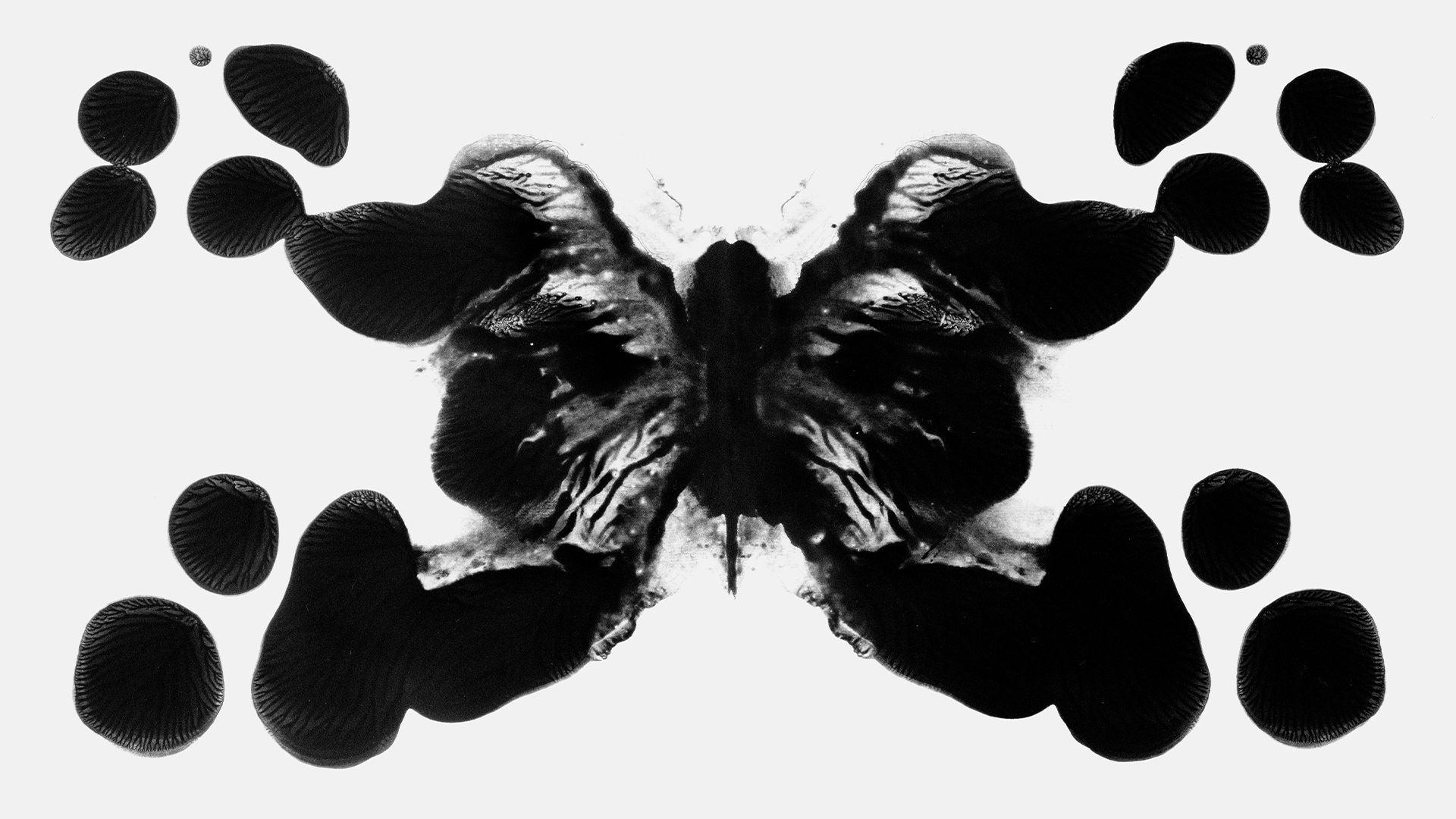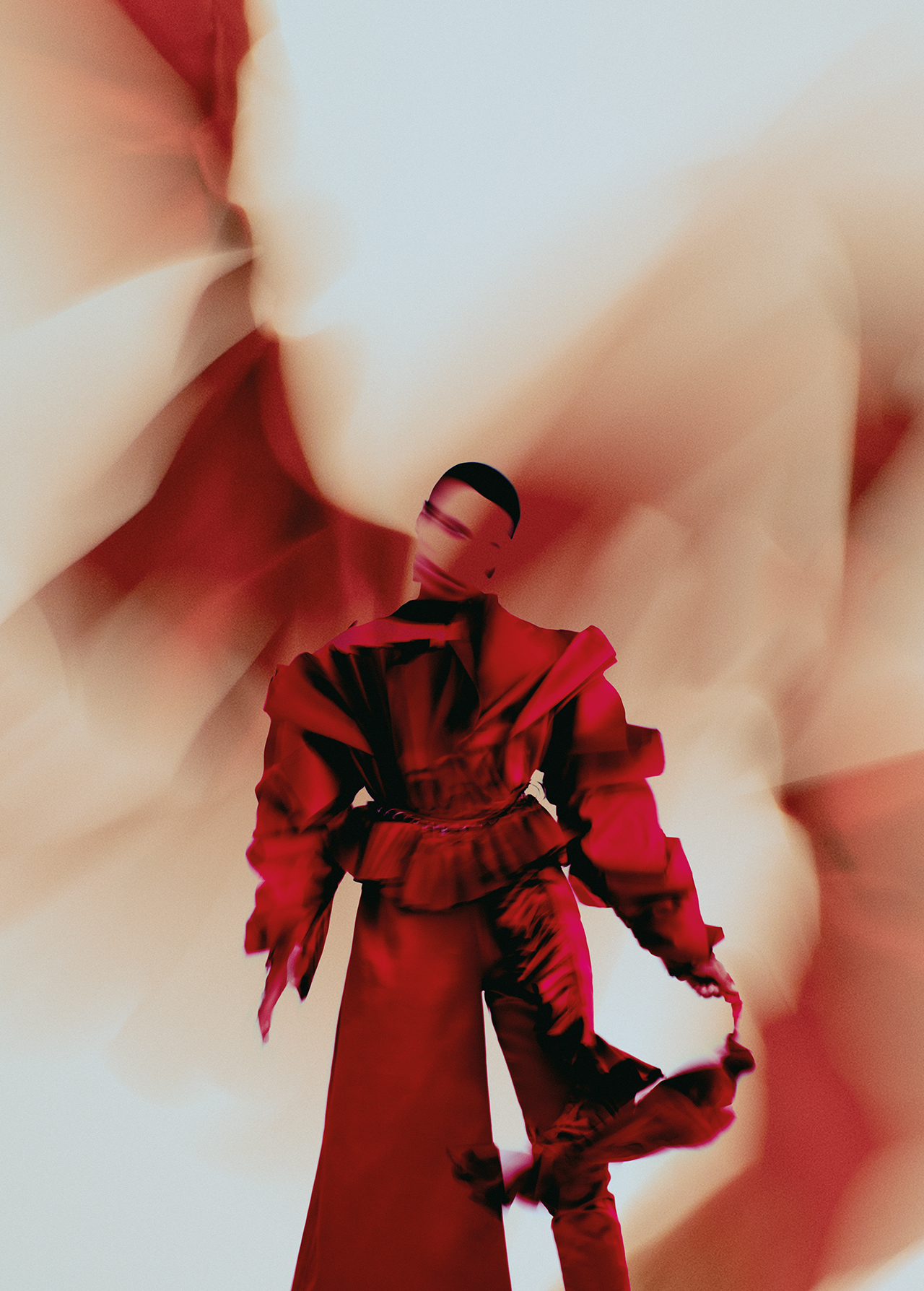
CREATIVE DIRECTION MARNE SCHWARTZ & DANÉ STOJANOVIC
PHOTOGRAPHY PAUL MOREL FASHION DIRECTION ANNA CASTAN
HAIR ANA RODRIGUEZ MAKEUP CHIARA GUIZETTI
MODEL SHAHED ELNAKHLAWY / W360 MANAGEMENT WORDS BIANCA BONAMI
When is a cloud not a cloud? When it’s a dragon, or a horse, or a tree. Differing perceptions of the same shape is one of life’s great oddities. It is an act that unites us in a shared experience and divides us in a disparate reading of it. Two friends looking at the same cloud will see different forms within it – a dog, a dancer, a fish gasping for its last breath. Both sets of eyes focus on the same white billowy mass but more often than not perceive it as different objects entirely. It’s a peculiarity that feeds into artistic expression and creation and delves into the heart of the human condition itself.
For Leonardo da Vinci, these differing visual perceptions were the enlightening key to overcoming artist’s block. He suggested looking for inspiration in unlikely sources. “If you look upon an old wall covered with dirt, or the odd appearance of some streaked stones, you may discover several things like landscapes, battles, clouds, uncommon attitudes, humorous faces, draperies, etc,” he said. “Out of this confused mass of objects, the mind will be furnished with an abundance of designs and subjects perfectly new.” The patterns or shapes – infinite in possibilities – that emerge from the dirt become an act of seeing rather than a flight of fancy; a means of interpreting what is there rather than imagining what is not. It’s an idea that took on new significance in the early twentieth century in the work of Swiss psychologist Hermann Rorschach. Seeking to understand more about the unconscious minds of his patients, Rorschach experimented with ink poured onto pieces of paper, which he folded to create a bilaterally symmetrical inkblot. Spreading out like capillaries across the surface, the ink would dry in an array of distinctive shapes. Each one, whilst vaguely reminiscent of a form – a bat or cloud or human figure, was ambiguous; simultaneously both something and nothing.
That sense of ambiguity is, more broadly, present in much of the information our senses receive. We seek wholeness rather than fragments and rely on prior information to fill in the gaps. Take the two cloud watching friends. As they converse about their differing perceptions of shape, they decipher each word not only through the sounds and movements coming from the speaker’s mouth but also through the lens of the preceding words, the topic at hand, and their longstanding knowledge of language. What has occurred – both in the immediate and distant past – will also affect their reading of a situation. If we accept that our perception is often influenced by psychological factors, carved out from a lifetime of experience, then the way we see the inkblots has the ability to tell us something deeper of ourselves.
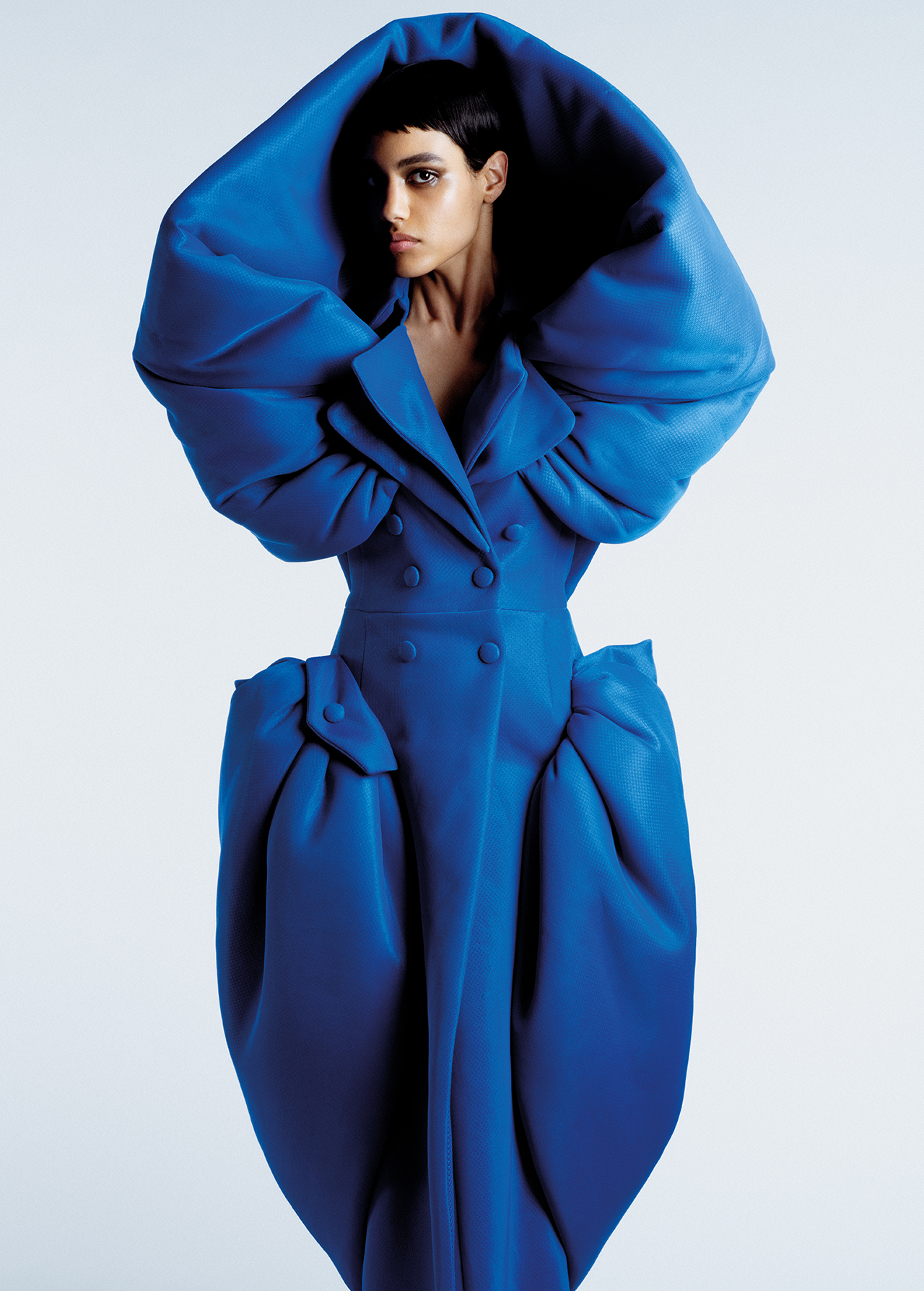
The eponymous Rorschach test encourages a projective technique that presents a subject with a deliberately ambiguous stimulus – in this case the accidental form of an inkblot – and assumes that the person will project their unconscious psychological processes onto it. The defining point of interest is not, therefore, what the inkblot appears to be but rather how the viewer interprets it.
At its core, the theory behind the technique is a simple one. The inkblots act as a kind of visual diversion and in the course of interpreting each image, attention is drawn away from the subject so that the person’s usual psychological guards are weakened. This, along with the question “what do you see?’’, translates into a greater openness and patient willingness to disclose what they perceive. In turn these responses help shape a psychological profile, with Rorschach theorising that patients undertaking the test would reveal hidden emotions – fears, hopes, losses.
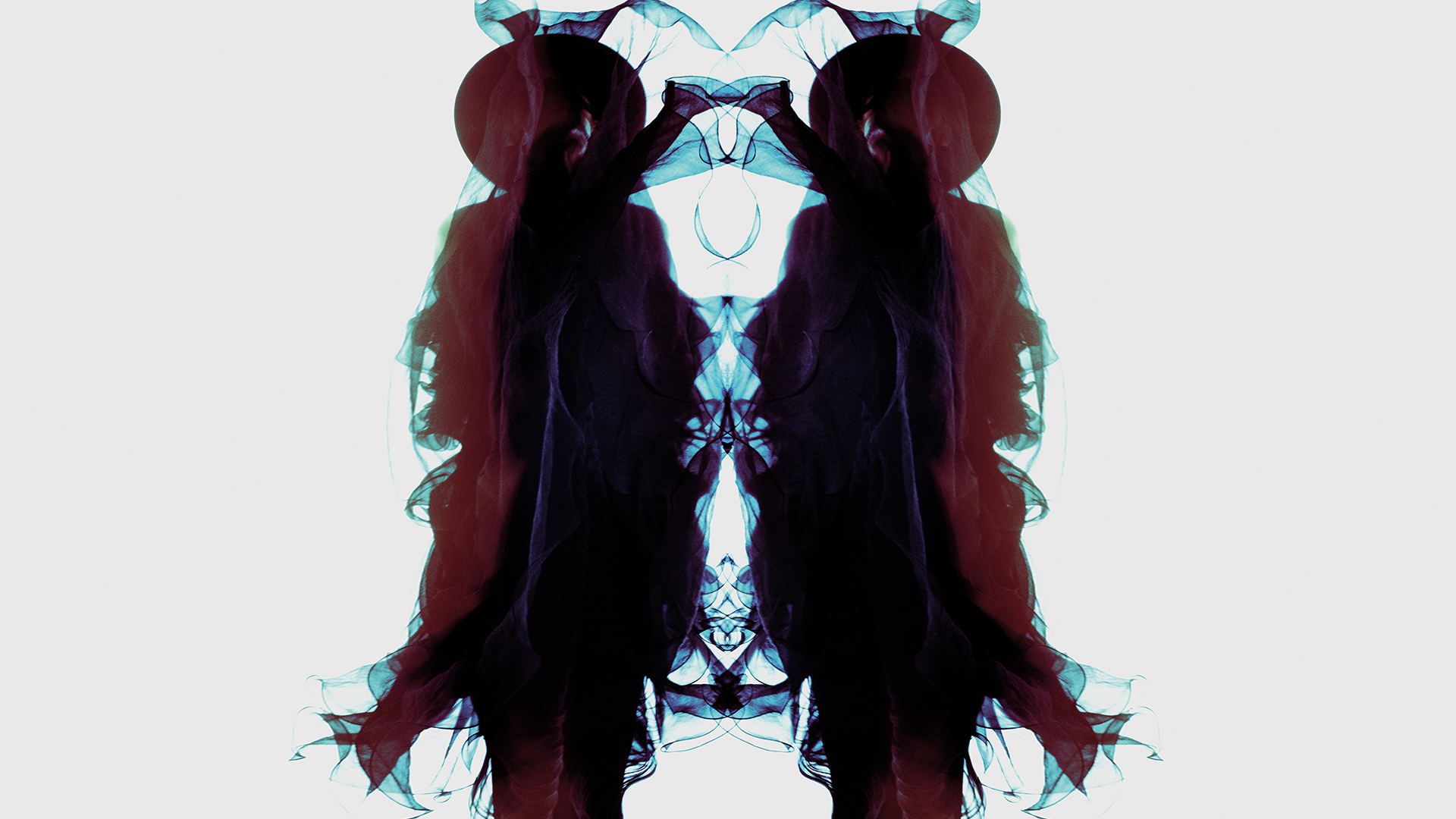
Over time, assumptions became consistencies – those whose answers emphasised movement were likely to be introverted; those who reacted with shock to the coloured images were inhibited; those who refused to respond to certain images were more prone to depression. The interpretative nature of the test, weighted with the psychological factors bearing down on perception, have encouraged a new way of understanding sight. In The Inkblots: Hermann Rorschach, His Iconic Test, and the Power of Seeing, author Damion Searls argues that “When you look at something, you are directing your attention to parts of the visual field and ignoring others. You see the book in your hand or the ball hurtling toward you, and choose to disregard all the other information that is reaching your eye: the colour of your desk, the shapes of clouds in the sky. You are constantly cross-checking what is out there against objects and ideas you recognise and remember. Information and instructions are travelling along nerves from the eye to the brain, and from the brain to the eye… To see is to act as much as react, put out as much as take in. Perception is not only a psychological process, it is also – almost always – a cultural one. We see through our personal and cultural lens, according to the habits of a lifetime, which are shaped by a particular culture… In principle, then, the Rorschach test rests on one basic premise: seeing is an act not just of the eye, but of the mind; and not just of the visual cortex or some other isolated part of the brain, but of the whole person. If that is true, a visual task that calls upon enough of our perceptual powers will reveal the mind at work.”
It’s a concept that is exciting and unsettling in equal measure – what we see is made up of who we are – so that beauty, or pain, or joy, or inkblots are in the eye, and mind, of the beholder.
